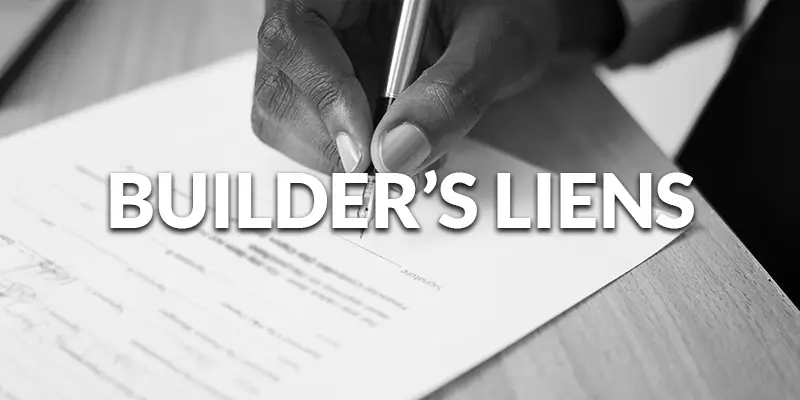Builders liens can be very difficult to understand but can be a very powerful tool, for contractors to use to secure their payment. The builders liens come from the Builders Liens Act, the act sets out who can file a lien on a property depending on what work was done. A contractor, generally under almost all cases is able to file a lien on a property. What that lien does is it allows that contractor to put a charge on the title of the property so that dealing with the property by the owner is prevented in the future. For example, if the owner is financing the build with bank loans, the bank will see that lien on the title and tell the owner to have it removed. What this often encourages the owner to do is to payout the amount of the lien to the contractor or to payout the holdback, thus in this case the contractor would get their money back. Under the Builders Liens Act there are very strict requirements for timelines. A contractor who is going to lien a project, must do so within 45 days of substantial completion or completion of the head contract. There are details around what substantial completion means, also whether there is a head contractor engaged. Be aware that there are very strict timelines. In a case where a contractor is engaged below a general contractor, then the timeline starts to run from the date that the general contractor’s contract is completed or terminated. If the 45 day deadline is missed then no lien may be filed and any lien that is filed, will be removed from the title and possibly also costing the contractor money.
If you have a lien that is actually attached to the title and is now protecting your interest, you might be asking yourself what should you do? In the case where a bank is financing a development, you will likely have that lien paid into court or paid into a lawyer’s trust. This doesn’t mean you are going to get paid out on the lien. What it does mean is that the owner has taken the amount of money for the lien and put it somewhere where you can fight over getting it. What it means is that the owner has the money, and that is a very good thing for you because you want to make sure that if you are suing them, that you will actually be able to recover it if you win. In order to get that lien, what you need to do is either negotiate or you need to be able to sue them. When you sue them, then you know that the money is being held in trust or in court, and you will be able to recover it if you are successful in the lawsuit. Again, you don’t actually get the money just because you have a lien, but it is a powerful tool because it causes the owner all kinds of trouble in trying to deal with the property.
What happens when you file a lien and the owner serves you with a notice to commence an action? This is a tool that the owner can use to have invalid liens removed. If you are served with a notice to commence an action, you must start the lawsuit within 21 days of receiving the notice. If you don’t start a lawsuit within those 21 days, your lien will be removed and all your rights will be taken away. It’s very important that you comply with all the deadlines under that statute, the courts are not lieniet about dates and deadlines with lien at all. So, if you miss the 21 day deadline, your lien is gone, likewise, if you miss the 45 days deadline, your lien is gone. Liens are powerful tools that you can use, but you must be aware of the dates and deadlines when using them.
If you have any further questions about liens, I highly recommend you contact our team of construction lawyers at ATAC Law or contact me directly, because the Builders Liens Act is very strict on what you can and cannot do with liens. If you would like to learn more about builders liens we can help you with that.






